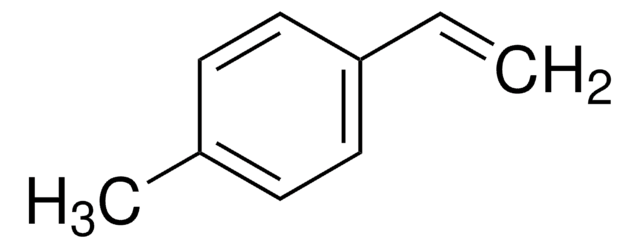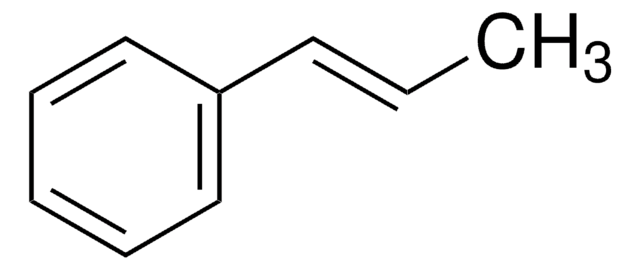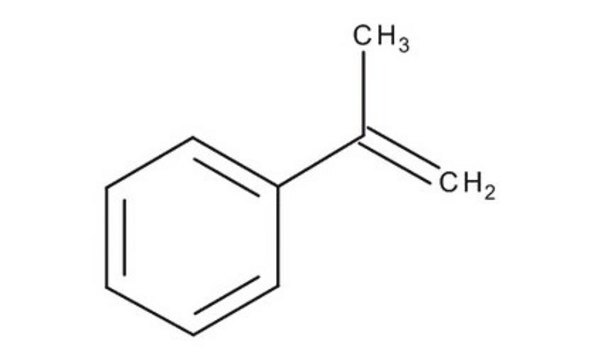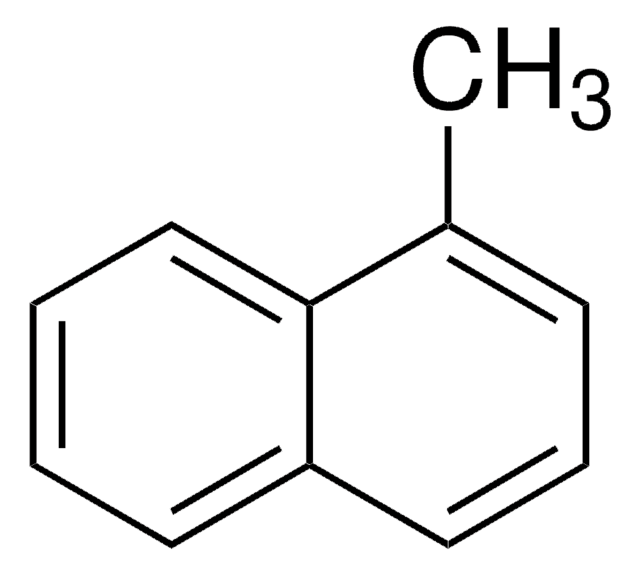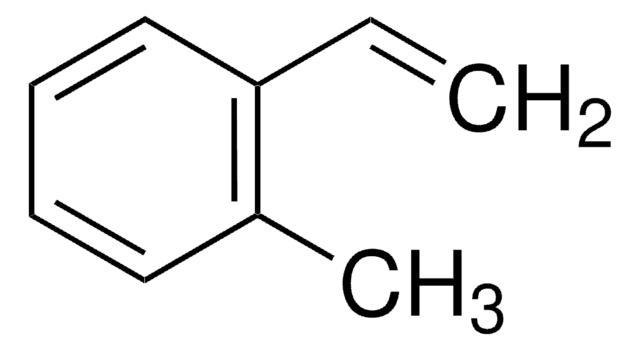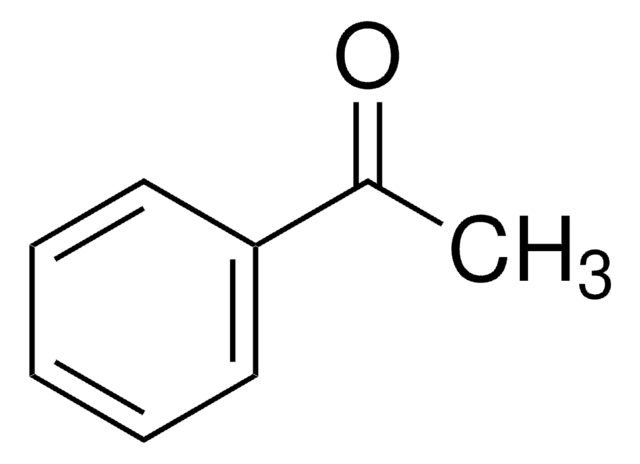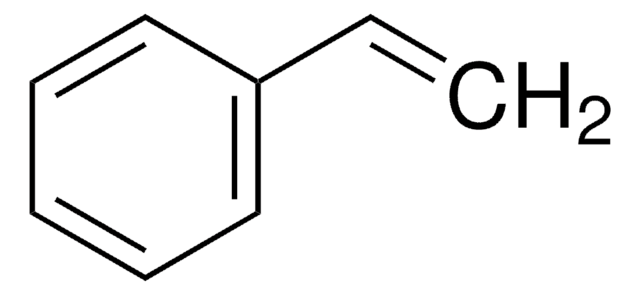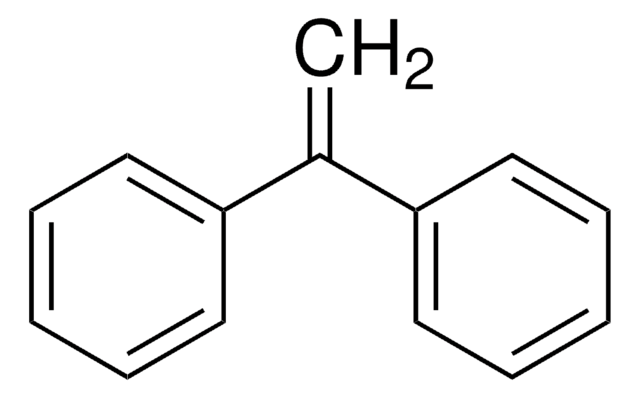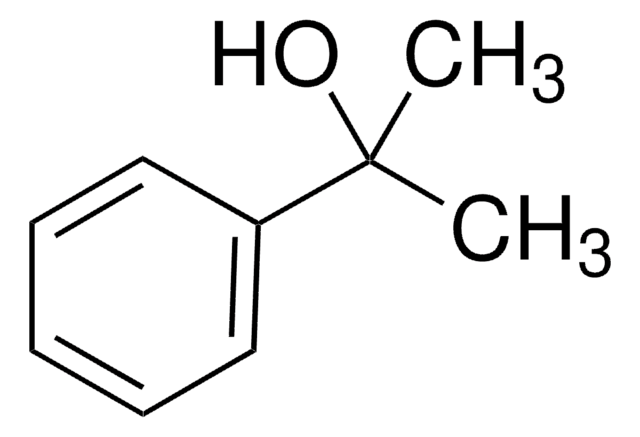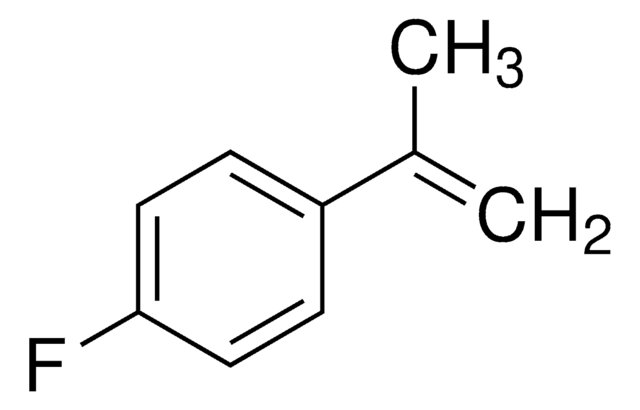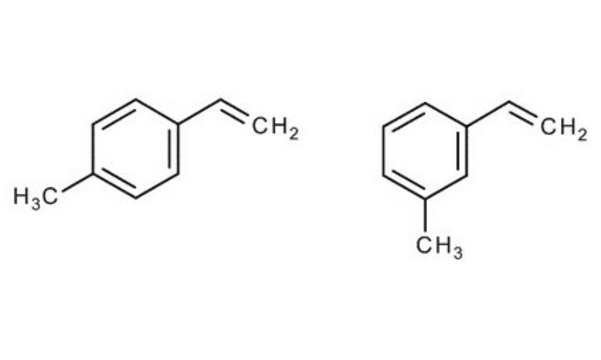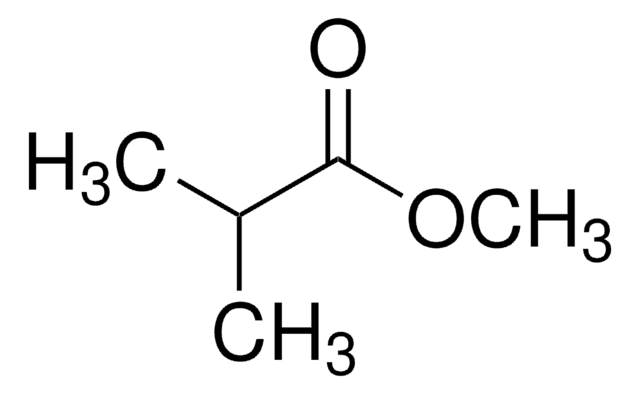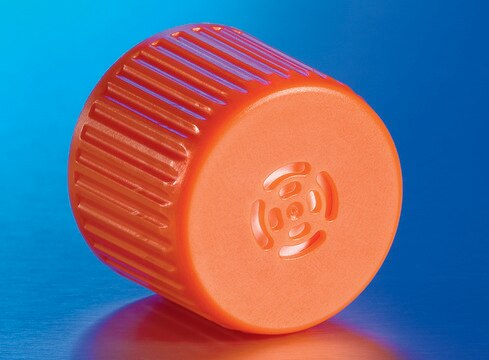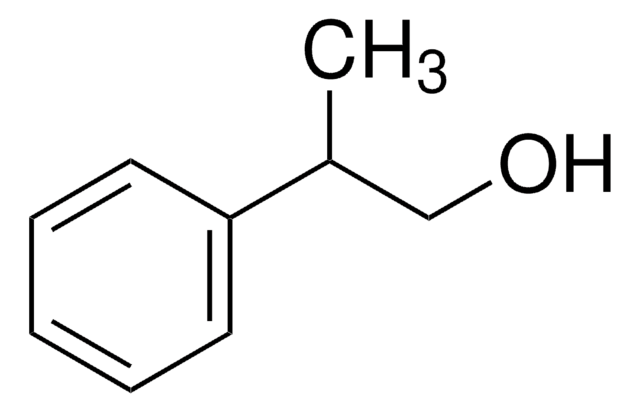M80903
α-Methylstyrene
99%, contains 15 ppm p-tert-butylcatechol as inhibitor
Synonym(s):
2-Phenylpropene, Isopropenylbenzene
About This Item
Recommended Products
vapor density
4.1 (vs air)
Quality Level
vapor pressure
2.1 mmHg ( 20 °C)
Assay
99%
form
liquid
autoignition temp.
1065 °F
contains
15 ppm p-tert-butylcatechol as inhibitor
expl. lim.
6.1 %
refractive index
n20/D 1.538 (lit.)
bp
165-169 °C (lit.)
mp
−24 °C (lit.)
density
0.909 g/mL at 25 °C (lit.)
storage temp.
2-8°C
SMILES string
CC(=C)c1ccccc1
InChI
1S/C9H10/c1-8(2)9-6-4-3-5-7-9/h3-7H,1H2,2H3
InChI key
XYLMUPLGERFSHI-UHFFFAOYSA-N
Related Categories
General description
Application
- As a monomer to prepare “Phene” monomer for photopolymerizable dental resin composites to reduce their polymerization shrinkage. α-Methylstyrene has a low double bond concentration suitable for the preparation of low volumetric shrinkage and shrinkage stress resilient resin composites.
- As a monomer to prepare poly(α-methylstyrene) polymer which can be used as an additive to fabricate organic thin film transistors. This polymer promotes the growth of uniformly aligned semiconductor crystals with significantly improved orientation.
- As a precursor to synthesize 3,4-dihydropyrans with therapeutic potential.
Signal Word
Danger
Hazard Statements
Precautionary Statements
Hazard Classifications
Aquatic Chronic 2 - Asp. Tox. 1 - Eye Irrit. 2 - Flam. Liq. 3 - Repr. 2 - Skin Sens. 1B - STOT SE 3
Target Organs
Respiratory system
Storage Class Code
3 - Flammable liquids
WGK
WGK 2
Flash Point(F)
114.8 °F - closed cup
Flash Point(C)
46 °C - closed cup
Personal Protective Equipment
Certificates of Analysis (COA)
Search for Certificates of Analysis (COA) by entering the products Lot/Batch Number. Lot and Batch Numbers can be found on a product’s label following the words ‘Lot’ or ‘Batch’.
Already Own This Product?
Find documentation for the products that you have recently purchased in the Document Library.
Customers Also Viewed
Our team of scientists has experience in all areas of research including Life Science, Material Science, Chemical Synthesis, Chromatography, Analytical and many others.
Contact Technical Service